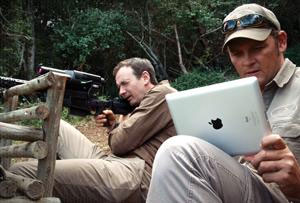 They're also an example of small-footprint computers, many of which are Linux-based, that continue to march into our everyday lives. Developers: You'd better get ready for the next wave. These devices are showing up in devices that do way more than sit on top of your entertainment center. For example, there's the Parrot Quadricopter. It's a four-rotor drone that sports a Linux-powered brain, sensor-controlled stabilization and a high-resolution color camera. It's not a drone meant for the CIA, it's for consumers. You fly the thing using an iOS or Android smartphone over its own on-board WiFi server. Yes, you can have your own drone for a few hundred dollars.
They're also an example of small-footprint computers, many of which are Linux-based, that continue to march into our everyday lives. Developers: You'd better get ready for the next wave. These devices are showing up in devices that do way more than sit on top of your entertainment center. For example, there's the Parrot Quadricopter. It's a four-rotor drone that sports a Linux-powered brain, sensor-controlled stabilization and a high-resolution color camera. It's not a drone meant for the CIA, it's for consumers. You fly the thing using an iOS or Android smartphone over its own on-board WiFi server. Yes, you can have your own drone for a few hundred dollars.
How a Small Computer Brings Down Big Game
Everybody remembers the ubiquitous TiVo set-top DVR boxes. They stored your favorite shows for future viewing -- and were prime targets for exploration and hacking. Still, they were cool and interesting.  They're also an example of small-footprint computers, many of which are Linux-based, that continue to march into our everyday lives. Developers: You'd better get ready for the next wave. These devices are showing up in devices that do way more than sit on top of your entertainment center. For example, there's the Parrot Quadricopter. It's a four-rotor drone that sports a Linux-powered brain, sensor-controlled stabilization and a high-resolution color camera. It's not a drone meant for the CIA, it's for consumers. You fly the thing using an iOS or Android smartphone over its own on-board WiFi server. Yes, you can have your own drone for a few hundred dollars.
They're also an example of small-footprint computers, many of which are Linux-based, that continue to march into our everyday lives. Developers: You'd better get ready for the next wave. These devices are showing up in devices that do way more than sit on top of your entertainment center. For example, there's the Parrot Quadricopter. It's a four-rotor drone that sports a Linux-powered brain, sensor-controlled stabilization and a high-resolution color camera. It's not a drone meant for the CIA, it's for consumers. You fly the thing using an iOS or Android smartphone over its own on-board WiFi server. Yes, you can have your own drone for a few hundred dollars.
 They're also an example of small-footprint computers, many of which are Linux-based, that continue to march into our everyday lives. Developers: You'd better get ready for the next wave. These devices are showing up in devices that do way more than sit on top of your entertainment center. For example, there's the Parrot Quadricopter. It's a four-rotor drone that sports a Linux-powered brain, sensor-controlled stabilization and a high-resolution color camera. It's not a drone meant for the CIA, it's for consumers. You fly the thing using an iOS or Android smartphone over its own on-board WiFi server. Yes, you can have your own drone for a few hundred dollars.
They're also an example of small-footprint computers, many of which are Linux-based, that continue to march into our everyday lives. Developers: You'd better get ready for the next wave. These devices are showing up in devices that do way more than sit on top of your entertainment center. For example, there's the Parrot Quadricopter. It's a four-rotor drone that sports a Linux-powered brain, sensor-controlled stabilization and a high-resolution color camera. It's not a drone meant for the CIA, it's for consumers. You fly the thing using an iOS or Android smartphone over its own on-board WiFi server. Yes, you can have your own drone for a few hundred dollars.


